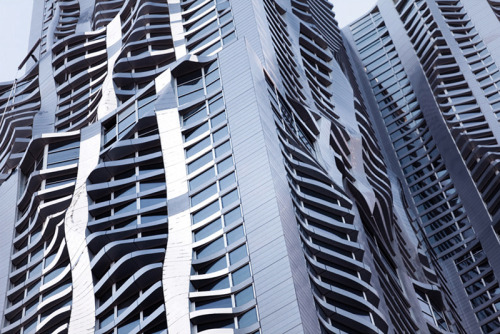Colored pencil can be applied to many surfaces effectively very successfully, including the following:
- Blue or black line diazo prints (blueprints)
- Hot or cold-pressed illustration board
- Architectural or tracing weight papers
- Textured (heavy tooth) drawing paper (typ. cold-pressed)
- Marker paper
- Matboard
It is important to use a soft lead pencil that allows one to lay down the color effortlessly. Many map or art pencils are either too hard or greasy, and will go on completely different from Prismacolor design brand pencils.
One should apply the color lightly at first until they have discovered the intensity and result of their own hand pressure. It may be that the direction of the stroke can also play a part in helping to describe the texture of the surface being drawn (i.e. carpet fiber, tooth, weave, softness, reflectivity, etc.).
Color Matching
With lighter colors finding the closest hue match may be possible. Typically, exceedingly dark colors do not read well in a visual presentation unless highlights are emphasized (rather than the true depth of the selected hue). Color matching can be achieved by layering various colored pencils.
Patterns + Surfaces
Express in reference to the surface’s plane, just as a fabric would “lay” on the surface. In this way, a striped sofa appears as a believable representation of how the fabric looks on the upholstered piece than if the plane direction was not considered.
Contrast
Color contrast may be beneficial in the development of a color scheme in general, but may be especially important in the visual drawing itself to add a feeling of liveliness to even an all white room. Tints of color and accents should be used to achieve contrast. Window treatments are useful elements that can add color contrast.
Highlights + Illumination
These are helpful in the creation of visual interest and provide a sense of depth to the drawing. Use sparingly to maintain a sense of realism.
Outlining + Graphic Texture
These add structural clarity and edge definition. Black ink technical pens and/or fine tip felt tip pen are good tools for this.
Plants
These can add warmth and texture to the drawing. Use shadowing to achieve appropriate volume, and variation in stroke and color for texture.
Accessories
Hang pictures on the walls, add features to the tabletops, combine fabrics and flooring, and consider how lighting (lamps, wall sconces, ceiling fixtures, etc.) may complete the design.
Human Figures
Need to be included for the viewer to interpret both scale and proportion relative to the interior space.

